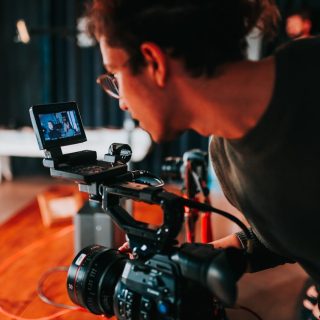According to a report released by DataReportal this year in April 2021, 4.72 billion people use the internet actively daily and spend up to 7 hours staring at their gadgets. This 60% of the global population, which puts many people at risk of digital eye strain. This term refers to various eye problems and visual-related issues such as eye pressure caused by prolonged exposure to digital device screens, including computers, tablets, and mobile phones.
People use the internet in different ways, from entertainment to connecting with family and friends through social networks. Also, the internet is readily available for everyone, including children. It has become a necessity and one of the reasons so many people spend time online for entertainment and other exciting things.
How do digital devices cause eye strain?
The leading causes of eye pressure revolve around people’s lifestyles and interactions with digital devices. Some of the factors that increase the risk of eye strain include:
- Spending many hours on digital screens
- Shorter distances between screens and the eyes
- High light intensity in the working environments
- Using digital devices so often
Common symptoms and diagnosis of eye strain
Some of the common symptoms of digital eye strain, according to American Association Optometric are:
- Eye irritation
- Headaches
- Pain in the neck and shoulders
- Sensitivity to bright light
- Blurred vision
- Eye dryness
However, some people have reported the following symptoms:
- Eye discomfort
- Difficulty changing focus from near objects to distant ones and vice versa
- Eye irritation
- Light sensitivity

In case any of these symptoms are experienced, visiting medical practitioners like opticians are highly recommended. Symptoms may be severe at some point. Nevertheless, they can still be diagnosed. Health professionals may apply some methods of diagnosis like using visual fatigue scales, examination of ocular symptoms, determining the blink rate, and accommodative testing of the eye and the pupil.
How is an eye strain diagnosed?
Only a professional healthcare provider can diagnose digital eye strain using validated questionnaires and other objective assessments such as the rate of blinking per minute and someone’s ability to refocus to distant and near objects. They use special equipment to diagnose the eye pressure and any other visual–related condition before giving the treatment.
Digital eye strain treatment
- Prescription eyeglasses for people who cannot see far or near objects
- Special eyeglasses to block out harmful light from digital gadget screens. They come with tints and coatings to help prevent and manage digital eye strain.
- Eye drops to relieve digital eye strain by creating artificial tears.
While DES is treatable, you can also prevent it. Taking short breaks at intervals of 20 minutes when using digital devices reduces the chances of developing eye pressure. Get outside and expose your eyes to natural light. Spending at least 2 hours outdoors daily also keeps eyes healthy. Besides that, always maintain a proper distance between your eyes and the screen. Finally, make sure you blink to keep the front surface of your eyes moist.
Conclusion
Eye pressure is one of the common visual problems caused by digital eye strain. However, it can be prevented by the responsible use of smart devices. Take care of your eyes for a better vision.












